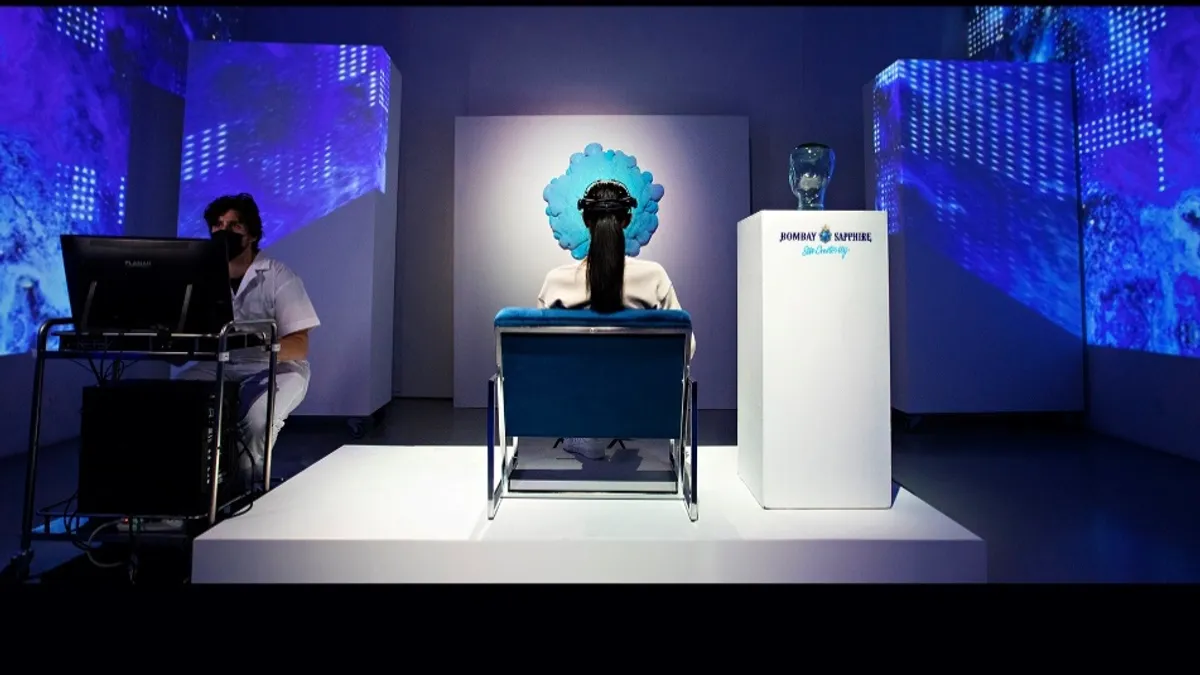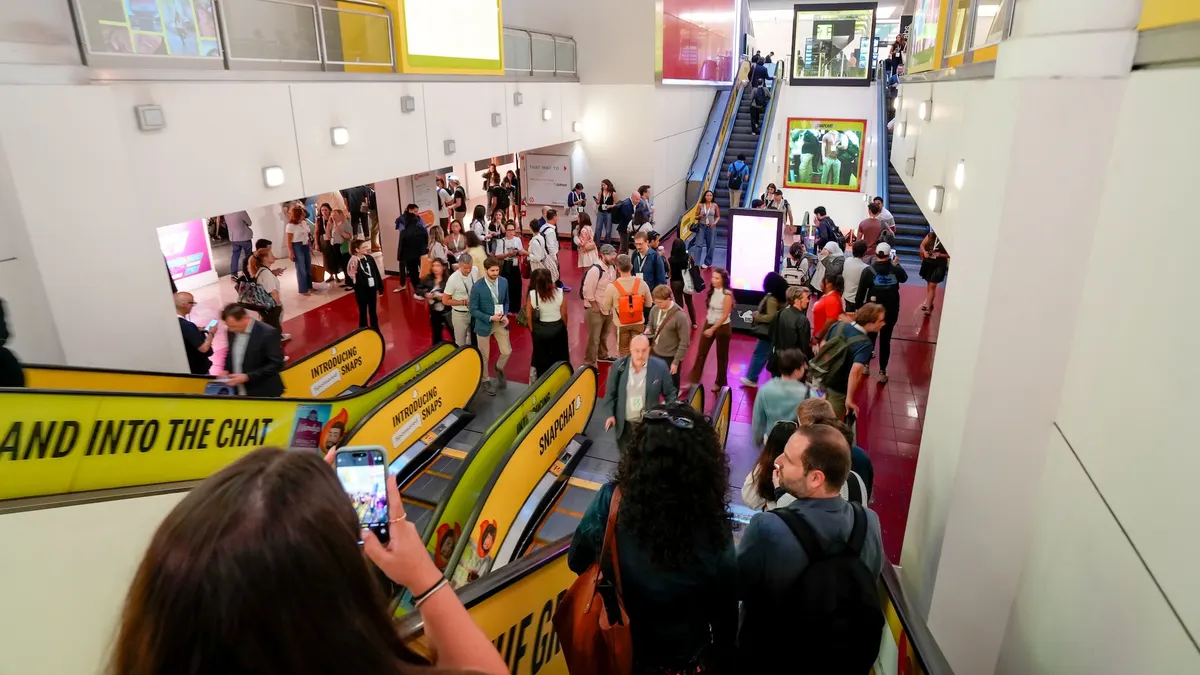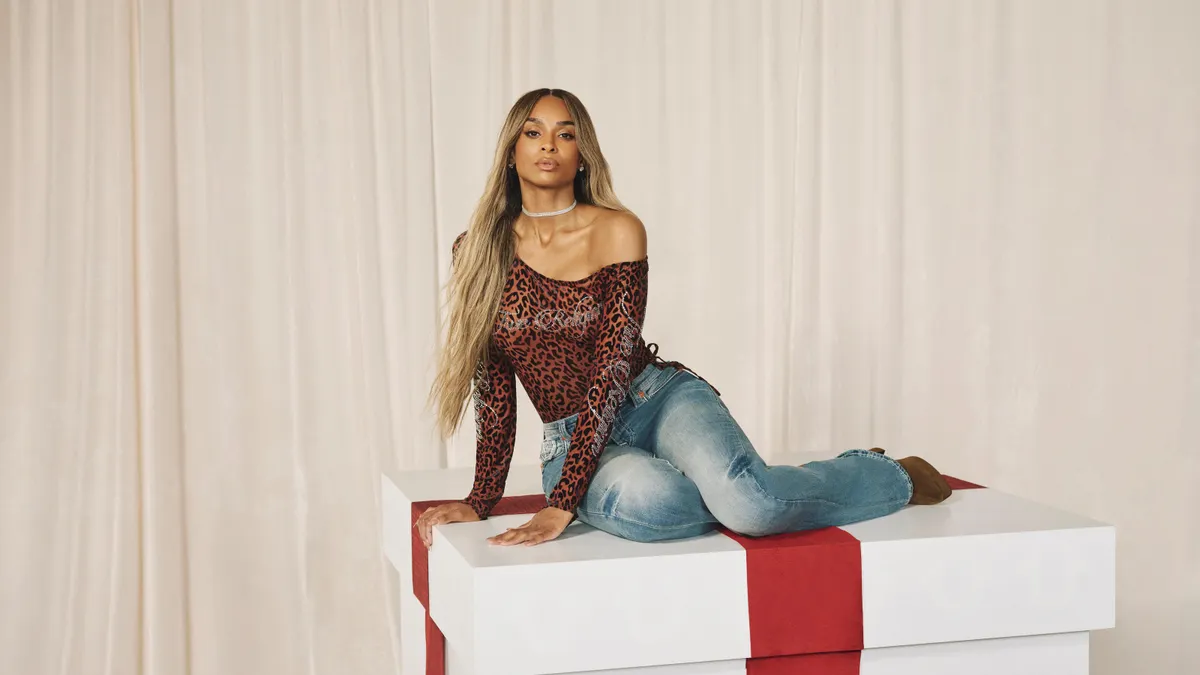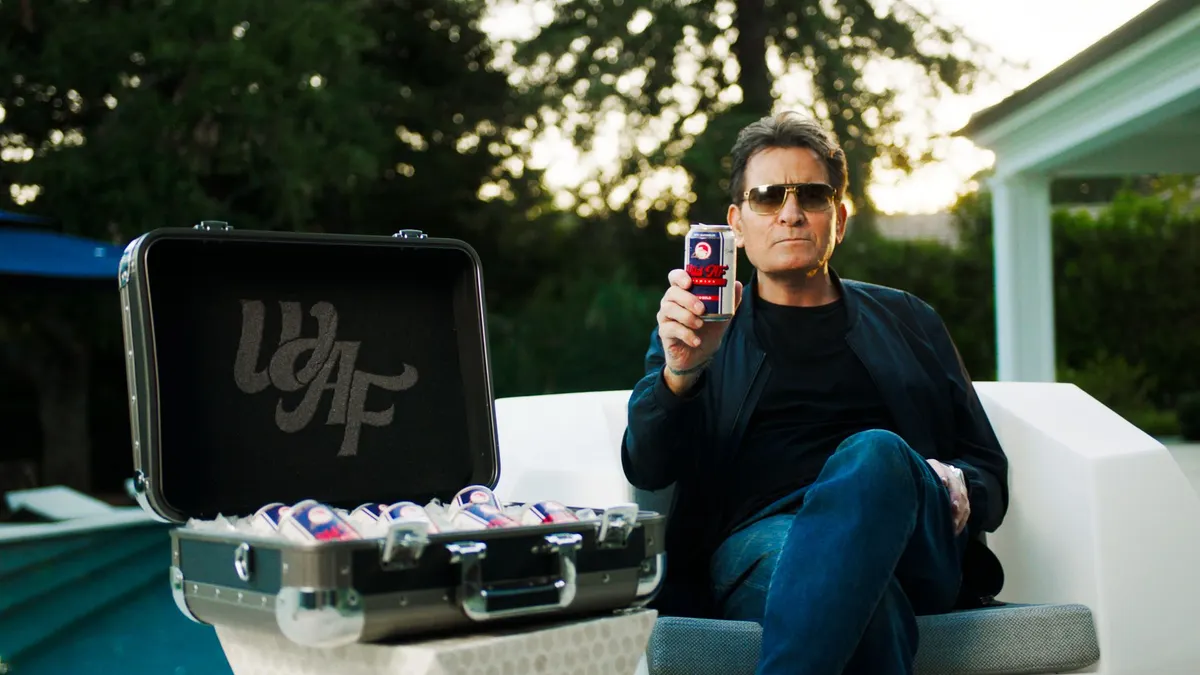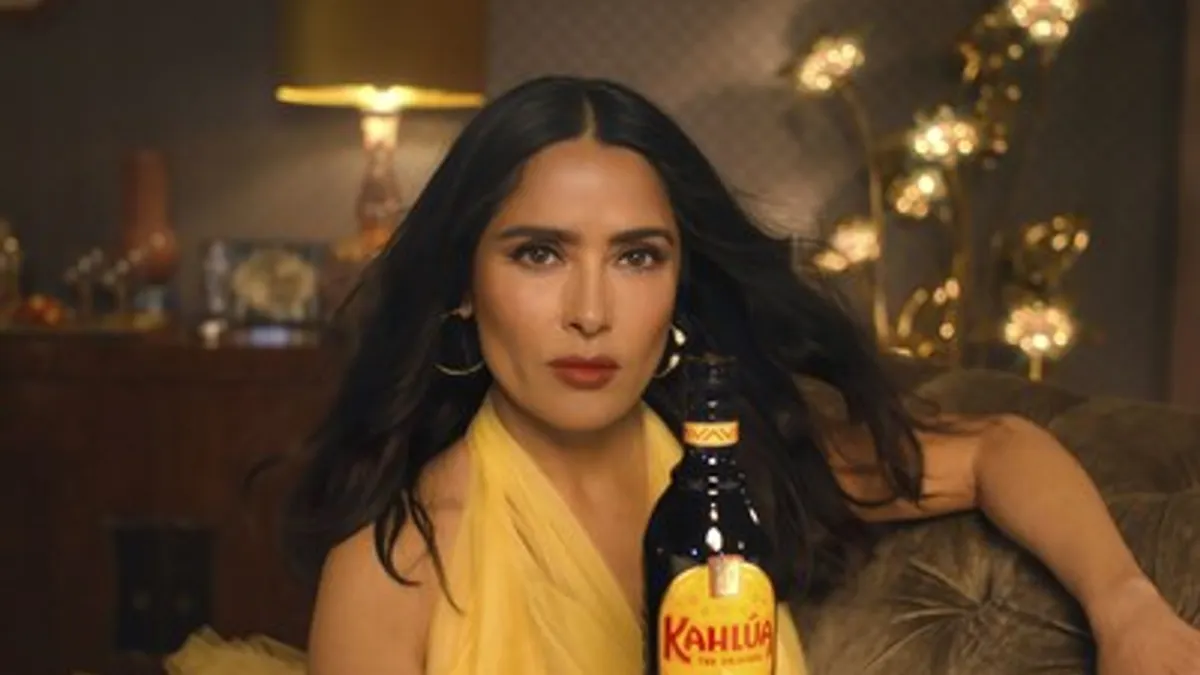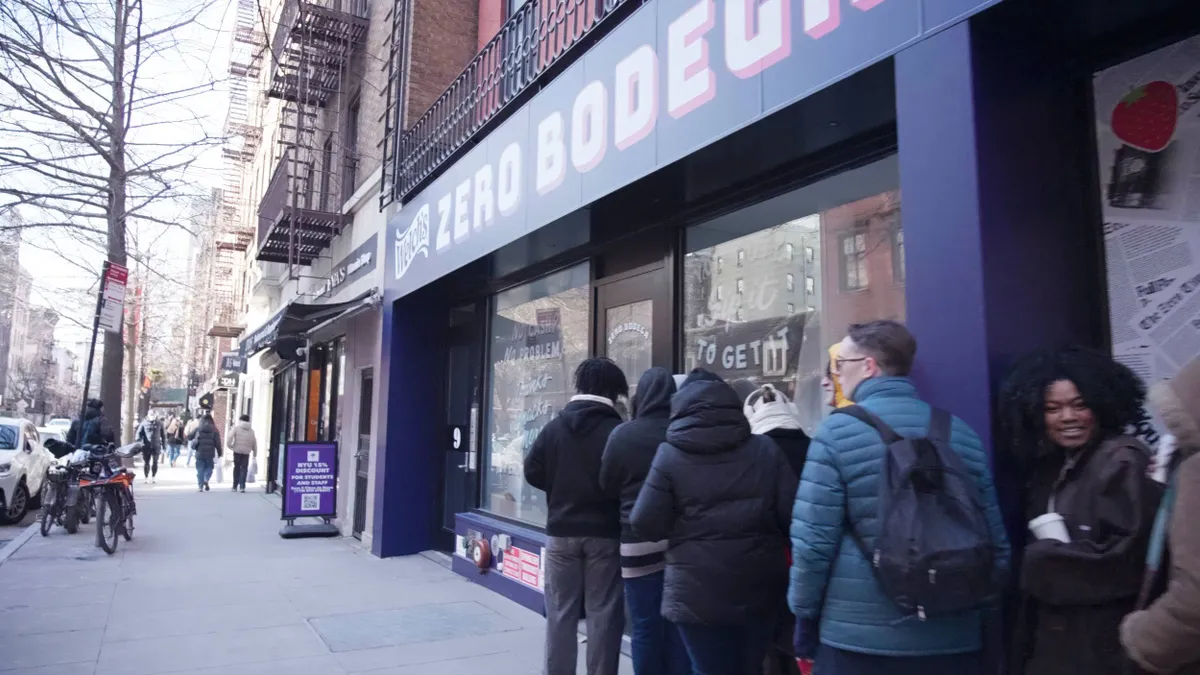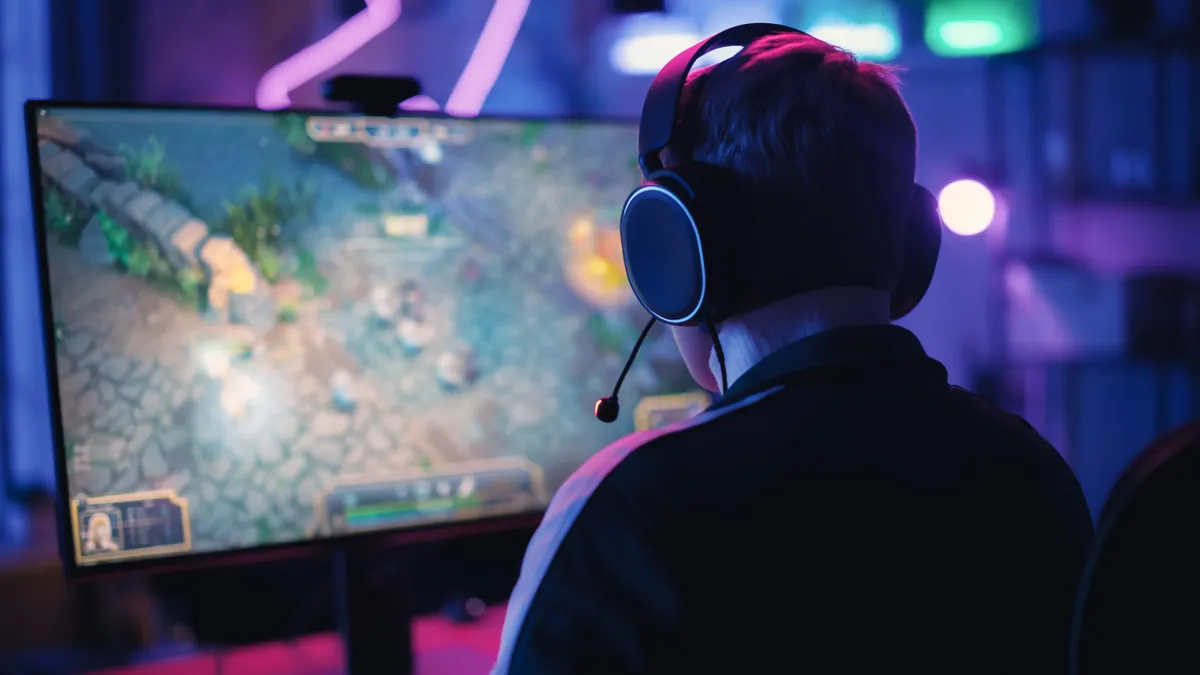Their heads fitted with neuroscientific technology, participants at Bombay Sapphire's Sensory Auction were asked to view a sculpture inspired by the brand's gin, while a technician beside them measured their subconscious emotional response. The event, which took place in New York City last month, aimed to spotlight the drink's role as a canvas for cocktail creativity, while rewarding the person with the strongest reaction to seeing the piece.
In recent months, spirit brands like Johnnie Walker and Grey Goose have launched similar multisensory experiences, a trend that suggests they are crafting the next generation of experiential marketing. While digital is still poised to be a central component of spirits' strategies, multisensory efforts allow brands to explore innovation in ways that are specific to their products, whether that be through unique sensorial atmospheres, scientific experiments or immersive storytelling. Moreover, effective experiential marketing can have a flywheel effect, leading to stronger digital breakthroughs.
By creating moments well-suited for Instagram or TikTok, brands can capture engagement and chatter from beyond those attending in person, said Mike Proulx, vice president and research director at Forrester.
"The people who are participating in these experiential activations become a proxy, almost, [as] default influencers," Proulx said.
Pent-up demand for in-person opportunities has contributed to the timeliness of these efforts, according to Jaime Keller, North American brand director for Bombay Sapphire. But as marketing executives continue to see innovation as a top priority — as shown in a July CMO Pulse survey by Forrester — the value of multisensory experiences could be enduring, as well as malleable to the channels leading marketing into the future.
"Whether you're talking to gin drinkers or you're talking to potentially new drink drinkers, how can you evoke what a drink can be all about through experiences? That's what ultimately led us to the sensory option," said Keller.
Innovating around a product
Multisensory experiences allow brands to create atmospheres consistent with their products, offering the chance for more descriptive messaging with which to reach consumers. Creativity, for example, is a primary theme of Bombay Sapphire's gin, which the brand emphasized in its Sensory Auction through art mirroring the drink's qualities as well as consumers' emotional response to viewing the piece.
"It is all about how we will evoke your senses — sight, sound, touch, taste, feel. And it's one thing to have an ad that can communicate that, but it's another thing when you can actually bring that to life," said Bombay Sapphire's Keller.
Illustrating this distinction is Grey Goose, which was already activating sensorial marketing in a video campaign around the April release of Essences, its vodka made with fruit and botanical infusions. Whereas a 60-second spot can only go so far to allude to the drink's flavor portfolio, watch parties for a virtual concert that took place a few months later actually attempted to "immerse consumers in the look [and] feel" of the product, per details shared by the brand.
Johnnie Walker's Princes Street attraction seeks to do the same through guided tours of the whisky's journey in taste and history, and in a building that emphasizes the brand's values of sustainability and biodiversity, per a press release. The experience also includes two bars available to visitors, as well as a cellar with rare whisky casks open for sampling.
While tastings like Johnnie Walker's could amplify the sensorial atmosphere for consumers, brands should be wary of relying too much on any one faculty and thereby missing the forest for the trees.
"I think of it less as the senses and more around the occasions and feelings that are evoked when you are experiencing one of these alcohol brands," said Forrester's Proulx.
As for convincing consumers of quality, one tactic that spirit brands have used is science. The presence of Bill Nye, for example, in a campaign in May for Bombay Sapphire's canned cocktails delivered a sense of veracity to the brand's claims of premium ingredients, as did the presence of scientists measuring emotional responses at its Sensory Auction. Similarly, William Grant & Sons-owned Reyka Vodka last month launched an adventure-themed bar that saw consumers teaming up with the brand's "volcanology unit" to complete an obstacle course. Though the team of "scientists" is only a symbolic gesture to Reyka's filtration process through lava rocks, its presence is still a nod to real science, thus achieving a similar effect.
In this way, multisensory experiences take trust one step further by allowing consumers to interact with authority figures. Delivering a sense of realness is ultra-important in winning people over to brands, said Keller.
Shifting old mythologies
An obstacle that spirit brands have to face is modernizing the traditions around their drink. Many kinds of liquors are intertwined with occasions and histories that date back over a hundred years, to the point that unwritten rules still saddle perceptions around how to best drink a liquor or what a consumer needs to look like, said Christian Lachel, chief creative officer of BRC Imagination Arts, which co-developed Johnnie Walker's Princes Street attraction.
These rules can push away younger consumers who prize open-mindedness and may feel excluded. In order to attract this cohort, Lachel suggested brands shift away from their old mythologies using open-armed marketing tactics.
"If you don't start to appeal to the next generation of audiences, and go beyond just a singular occasion and look at multiple occasions — there's no growth in that," Lachel said.
To achieve growth, spirit brands have tapped the potential in immersive storytelling offered by multisensory experiences. In creating the Princes Street attraction, for example, BRC tried to bring a face to the brand that is faceless to many younger consumers. The agency considered how John Walker — the brand's founder and namesake — likely had more in common with young people than they would expect, such as an entrepreneurial spirit and a passion for innovation.
By channeling that storyline into the experience, BRC aimed to strike a chord with new consumers and welcome them into the brand's home.
"You can really kind of have an enriching discussion about where things have come but [also] how they influence the future," said Lachel.
BRC channeled similar storytelling in a brand experience for Absolut earlier this year. Titled "Absolut Home," the effort turned the brand's remote origins into a welcoming environment by building an attraction in its home villa of Åhus, Sweden. The Absolut Home seeks to teach new audiences who the bearded guy on the Absolut bottle really is, per the site's homepage.
But whether a brand is launching a multimillion-dollar attraction or a one-night event, attracting new audiences should not be at the expense of already existing ones. Bombay Sapphire's Keller spoke to this idea by recalling that these experiences are all about inclusivity and providing access. Brands should therefore approach without many preconceived notions about who might be most impassioned by their stories.
"You got a foot in the traditional past, but at the same time you're moving into the bold new future. You don't want to leave anybody behind," Lachel said.
Digital can help amplify
While a multisensory experience done right can reach audiences in ways that digital can't, marketers can amplify their reach by looking for organic ways in which the two spaces fit together.
Proulx's point of creating moments well-suited for Instagram or TikTok, for example, is one approach that leverages digital in a strategic way. Another is e-commerce, which Keller pointed to as an especially effective complement to experiential activities. Despite challenges stemming from the spirits industry's three-tier distribution system, the rise of delivery companies like Drizly and ReserveBar have helped pave a way forward.
An area with exciting yet uncertain potential is the metaverse, which experts are already seeing pique the interest of spirit brands. Mixology experiences that use augmented or virtual reality (AR/VR) is one pathway, such as in the form of a VR cocktail party, happy hour or DIY class, per Lachel. Spirit companies are also activating blockchain, but whether the digital space can boost the reach of a physical experience or is better off as a standalone effort will depend on how well marketers are able to bridge the worlds together.
"It has to be seamless between whether we're doing something physically in Edinburgh or we're sending that out to meet some people in Singapore for an evening of tasting events," said Lachel.
The technology needed to fulfill grand visions for the metaverse is still years away, but existing digital tools offer brands ways to engage audiences that still vary significantly in their readiness to attend physical events. With another possibly dreary winter ahead, such tools will continue to play a big part alongside in-person experiential campaigns.
Finally, brands should once again apply the notion of inclusivity when considering how digital additions fit into their multisensory experiences. As with their storytelling, brands should aim to strike a balance in their targeting so as not to be overly narrow.
"If it's all just bold and big and different, you have a chance of alienating folks, but if you're able to find the right blend of different experiences and different portals into those worlds in which you can engage and ask them to join you — that's a more friendly approach," Lachel said.



